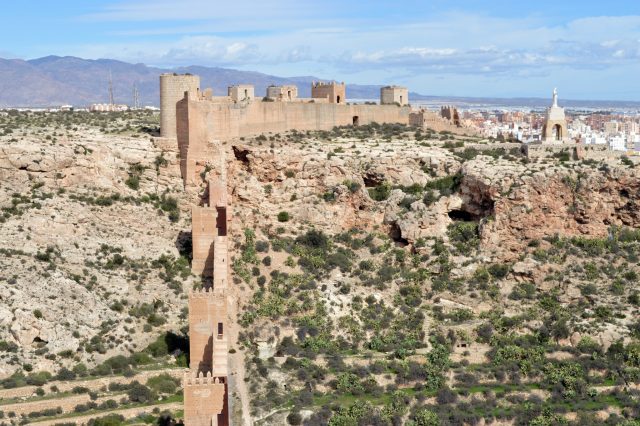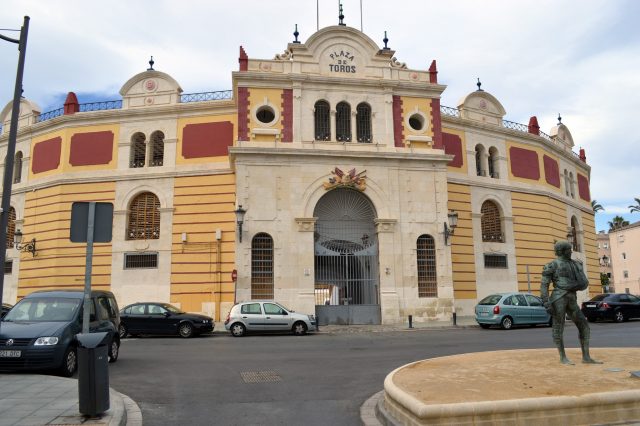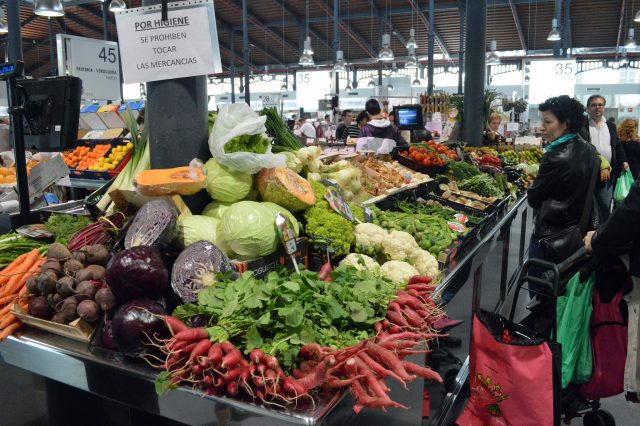 Alan Gandy
Alan Gandy
Many cities and provinces in Andalusia have become well known to international lovers of beaches, history, cuisine, and culture alike – familiar names like Córdoba, Granada, Jérez, Málaga, Seville, and even Ronda. But its easternmost province Almería is one that has tended to fly under the radar of foreigners while remaining a cherished getaway of millions of Spaniards, thanks to 100 kilometres (67 miles) of stunning beaches and natural reserves like Cabo de Gata.
And anchoring all of this is the province’s capital, also named Almería, which as expats my husband and I love to visit because not just because we live a couple of hours away but also because although it may come across at first glance as an unexceptional, biggish, commercial city (pop. 193,000), it’s actually a marvellous and welcoming place to indulge our love of history/culture and dining.
Though settlement in the area is thought to have originated during the Roman Empire, it was the invading Moors of Al-Andalus who established the core of today’s city, founding the town of Al-Mariyya in 955. And so the main must-visit today remains the 10th-century Alcazaba (top), Andalusia’s second largest Moorish fortress (after Granada’s Alhambra), presenting quite magnificent views over the city and port (go for sunset, if you can), along with well tended gardens and three walled compounds (one of them built under Ferdinand and Isabella following the Christian Reconquest) with their evocative crenellated battlements, courtyards, baths, fountains, royal halls, and more. Very Game of Thrones (in fact, a Dorne scene in season six was shot here).
At the foot of the Alcazaba, you’ll want to roam the narrow streets of the original mediaeval walled medina, then work your way over to the city’s other main landmark, the relatively low-slung, Gothic/Renaissance Cathedral of the Incarnation, built in the mid-16th century and conserving some curiously fortresslike aspects (pirate raids from North Africa’s Barbary Coast were still a bother at the time). The third must is the handsome, yellow, late-19th-century plaza de toros (bullring), with the fight season running spring through autumn. And even if you dislike bullfighting, the museum inside offers a great insight into a key aspect of traditional Spanish culture, including costumes and paintings by local artists.
 Alan Gandy
Alan Gandy
Speaking of Almería museums, the most impressive in town is the Museo de Almería, housed since 2006 in a three-storey modern structure packed with exhibits detailing the history and cultural of the area dating back to the Neolithic Millares culture (you can also visit the original archaeological site on the city’s outskirts) – and starring many Moorish artifacts from the Alcazaba.
The city’s art museum is divided into classic art housed in the Basque-style, early-20-century Casa Doña Pakyta and the sleek modern annex next door housing contemporary art. And the Centro de Interpretación Patrimonial in Plaza Vieja presents additional historic background on the province with interactive exhibits in both Spanish and English.
More specialised options include the Museo de la Guitarra, near the cathedral, which tells the story of Antonio Torres, said to be the 19th-century designer of the modern acoustic guitar. Located close to the cathedral, the museum with its interactive displays is worth at least a half-hour visit.
Photography buff? Check out the Centro Andaluz de la Fotografía, close to the port, with regularly changing exhibitions featuring topnotch photographers from all over Spain and the world. And foodies will enjoy the Castillo de Tabernas Olive Oil Museum, set in a traditional stone house and including – of course – yummy tastings!
One unique bit of 20th-century history can also be experienced here, dating back to the 1930s Second Republic, when underground air raid tunnels were built to protect the local populace from bombing by Francisco Franco’s rebel forces and their Nazi allies. Pay a visit to these dank Refugios de la Guerra Civil and imagine the terror those poor people must have felt during that traumatic time.
 Alan Gandy
Alan Gandy
But on to more pleasant topics – and did someone say foodie? Almería dining is serious business for locals, with just about every cuisine you could imagine. Obviously the ubiquitous Spanish tapas are available, sometimes free with a glass of beer or wine such as in the neighbouring province of Granada, as well as some typical Andalusian specialities. But fusion and haute dining have been making their mark in recent years, with top chefs delivering the highest quality for discerning diners alongside the humble traditions of grandma’s kitchen.You’ll find plenty of fresh foodstuffs on offer, too, at the Mercado Central, where you can mingle with the locals, and even buy a nibbly bit or two, nab some tasty photos, as well.
By the way, it’s interesting to note that despite Almería’s recent growth, it remains one of Spain’s cheaper cities to visit. A beer or glass of wine is unlikely to cost more than €1.50 while most of the museums and places of interest are free to enter or ask for only a small fee. Hotels and hostels are reasonably priced, catering to business travellers and those using the city as a short-break destination. Prepare to experience pure and unadulterated Spain here; it’s a city at its most hardworking and earnest, with shops, bars, restaurants all clamouring to offer you an experience untainted by mass tourism.
Finally, keep in mind that it is at night that Almería really comes to life. This is when you should abandon the main thoroughfares and disappear into the backstreets for food and drink – especially in the historic quarter. The locals head out at around 10 pm to eat, so be prepared for a late night party with oodles of people-watching opportunities!
More info in English: TurismodeAlmeria.org.
Elle Draper has lived in Spain since 2006, in the charming, historic Almería town of Vélez-Blanco. Besides running a web design business, she also runs the Spain Buddy blog, and loves wine, food, her husband and three bouncing dogs – although not necessarily in that order. A hardcore Doctor Who fan, Elle likes nothing more than spending time with chatty friends around a table overflowing with good food and gallons of wine.

